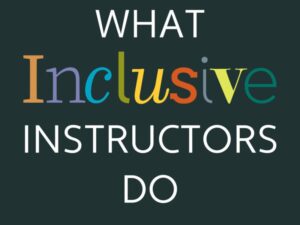 |
When I started teaching last century, I was hyper-sensitive about avoiding mistakes. Or at least that was my intent. However, welcoming mistakes and ambiguity in the classroom can spark your students’ curiosity. In their Chronicle article, How to Embrace Uncertainty in Your Teaching, Murphy and Levison give five simple ways to spark curiosity, including pursuing the unanticipated in class discussions and modeling not knowing (something I’ve grown more honest about).









